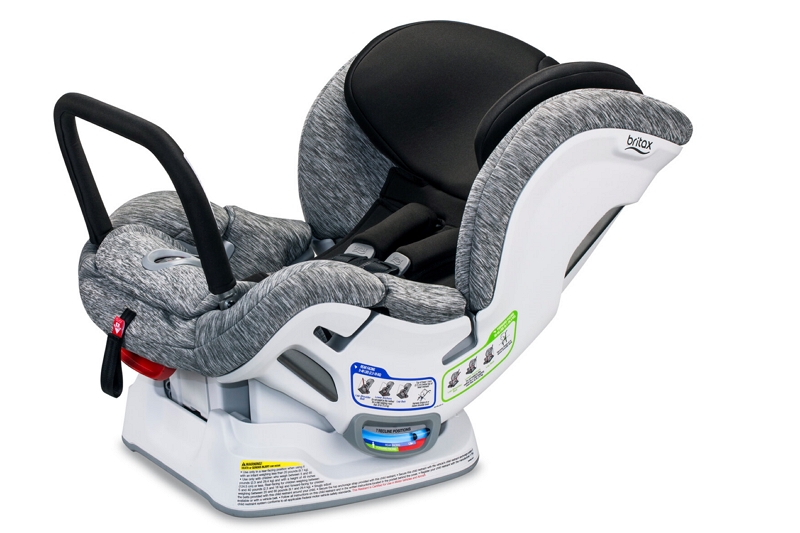How do you know when your child has outgrown their car seat? When your child is too big for the car seat, you will need to replace it. You can use a guide from your manufacturer or consult with an expert in your area.
Some general guidelines may be helpful when determining if your child has outgrown their current model of car seat:

* If they have reached the top height and weight limits allowed by their specific type of car seat, this means they have most likely grown past its capabilities
* If they no longer fit properly in a safety belt installed with a booster mode without slouching over, then it’s probably time to upgrade This is only going to apply if they have been using one of these models up until now since children grow different rates.
Check whether any signs may indicate a child has outgrown their car seat. If they are not using these models anymore, you should consider replacing them with the next level up in protection and safety for your child.
At what age do you take the infant insert out of the car seat?
You should take the infant insert out of your car seat once your child reaches 30 lbs. and/or is at least nine months old, depending on which guidelines you follow. The AAP recommendation states that infants under 12 months should ride rear-facing in a convertible or multimode car seat (infant seats can only be used rear-facing).
However, they acknowledge that some children will not fit well into these types of seats due to their height and weight before reaching one year; it would then be appropriate to turn them forward-facing as long as they are within the limits for both weight and height set by this organization.
In any case, if using an infant carrier with a stroller system such as those from Baby Jogger City Series, you’ll be able to use it as long as your baby fits in the carrier.
Why is the seat behind the driver the safest?
This is because it has a seat belt, which makes the difference. In addition, this area does not have an airbag because of its location about where you would sit if you were driving.
Although rear-facing car seats are slightly safer than forward-facing ones for babies under two years old and weighing less than 40 pounds (18 kilograms), they should only be used up until then according to HealthyChildren.org.
However, Health Canada recommends rear-facing as long as possible – at least up until age four or five when your child reaches 35 pounds (16 kilograms).
You can use either method; just remember that one rule never changes: always stay buckled up! According to CarSafetyCanada’s website, there are several other reasons why the back seat is safer than the front:
Always buckle up! Make sure kids in your car sit in a high-back booster until they’re at least 145cm (57 inches) tall. If you have an airbag on your dashboard and it’s not possible to put a child 12 years or younger behind it, move them as far away from the airbag as possible.
Never use pillows or bulky coats to boost children while buckling up – this might shift during a crash and leave them without protection. Seat belts should fit across the chest and over the hips/pelvis – never around arms or legs because that can cause injuries if there’s a sudden stop or collision like during braking abruptly.
Should a car seat go behind the driver or passenger?
The correct answer to this question is the driver. The front passenger seat should never be used as a car seat location because it does not have an airbag and there are no shoulder belts attached to its back, therefore making it unsafe for children under 13 years of age.
A child’s safety is why parents need to consider going with their instincts when deciding on which car seats go behind each person in the vehicle – especially if they want both cars equipped with one standard install base or what manufacturers call “universal fit.”
If you own more than one vehicle that requires a rear-facing infant carrier then purchasing a second base would probably make sense instead of using adaptors between vehicles from different manufacturers all while having your precious cargo secured to a seat that’s been compromised by an ill-fitting connection.
How should a newborn look in a car seat?
Most parents are very cautious about making sure that the car seat is installed correctly. When you look at a newborn in their car seat, they should be positioned with their back against the bottom of the seat and facing forward.
They should also have plenty of head support to prevent unnecessary strain on your baby’s neck, legs folded up so they can fit properly into the shell, but not crossed or dangling down straight below them as this could cause potential damage to areas like hips if pressure were applied there for long periods of time.
If possible it’s best to check all angles before placing your child inside just to ensure they are comfortable enough where ever possible during transportation by vehicle. Parents will typically want infants who can feel snugly supported and secure, particularly on a long journey.
